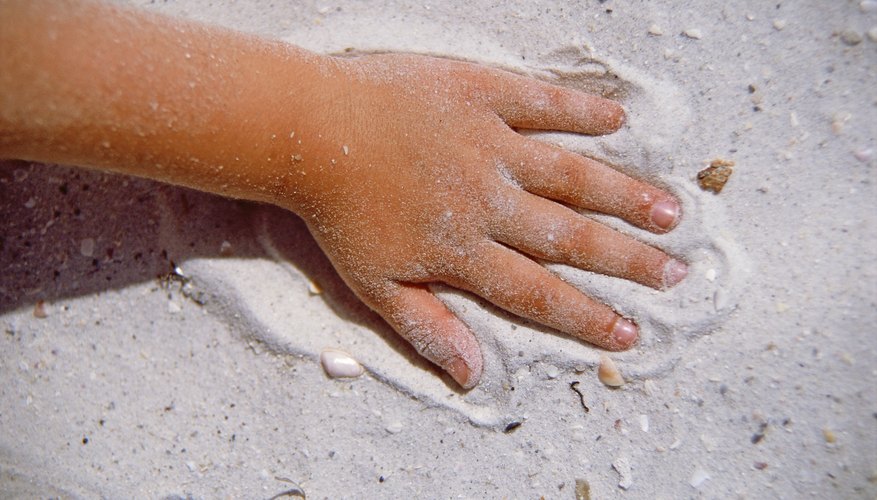The words "rough" and "smooth" are adjectives that help describe the feel of different textures. You can teach children concepts about rough and smooth textures through hands-on activities that encourage them to explore materials and to learn skills such as matching and sorting. It's also important to introduce activities that let children describe their observations so that kids can acquire new vocabulary and develop language skills such as reasoning and comprehension.
Sit with the children in a circle. Show them an object that is smooth to the touch, such as a large, smooth pebble and describe the feel of the pebble with simple language and a short sentence structure. For example, say, "This pebble feels cold in my hands."
- The words "rough" and "smooth" are adjectives that help describe the feel of different textures.
- Show them an object that is smooth to the touch, such as a large, smooth pebble and describe the feel of the pebble with simple language and a short sentence structure.
Pass the pebble to a child who is sitting to one side of you. Invite the child to feel the pebble and comment upon how it feels. Ask the child to pass the pebble into the hands of the adjacent child who can then feel and describe the pebble.
Have the children pass the pebble around the circle until every child has had the opportunity to feel it and describe it. As it moves from one child's hand to another, encourage the children to use their sense of touch rather than their sense of sight to help them describe the pebble. Praise the children's efforts, and reinforce use of words that are appropriate for describing the texture of the pebble, such as "cold" and "hard" by repeating them back to the children. In particular, reinforce any use of the word "smooth." For example, say, "Katie says the pebble feels smooth to the touch."
- Have the children pass the pebble around the circle until every child has had the opportunity to feel it and describe it.
- Praise the children's efforts, and reinforce use of words that are appropriate for describing the texture of the pebble, such as "cold" and "hard" by repeating them back to the children.
Say to the children, "This pebble feels smooth in my hands." Demonstrate how your fingers can slide easily over the surface of the pebble as you repeat the word, "smooth." Place a sorting ring onto the carpet in front of the children and place the pebble inside the ring. Write the word, "smooth" onto a piece of card and place it next to the pebble.
Show the children an object that feels rough to the touch, such as a pine cone. Have the children pass the pine cone around the circle as before, and let each child feel the pine cone and comment on its texture.
- Show the children an object that feels rough to the touch, such as a pine cone.
- Have the children pass the pine cone around the circle as before, and let each child feel the pine cone and comment on its texture.
Say to the children, "The pine cone doesn't feel smooth. The pine cone feels rough." Demonstrate the feeling of roughness by showing how your fingers move jerkily over the pine cone's surface. Place another sorting ring onto the carpet and place the pine cone inside the new ring. Write the word, "rough" onto a piece of card and place it next to the pine cone.
Place a variety of rough- and smooth-textured items, such as a hairbrush, a spectacles case, a piece of sandpaper and an apple, into a cloth bag. Have the children pass the bag around the circle and take turns to take an item out of the bag. Encourage each child to feel the item, identify whether it feels rough or smooth and then place it in the appropriate sorting ring.
TIP
Follow up the initial teaching activity by organising practical activities and play sessions that reinforce concepts about rough and smooth. For example, set up a collage activity to let children make a "rough" collage picture by gluing on materials such as sand, pieces of shell and twigs. Then introduce a contrasting collage activity that lets kids glue on smooth-textured materials such as soft ribbons, silky fabrics and pieces of shiny paper.
